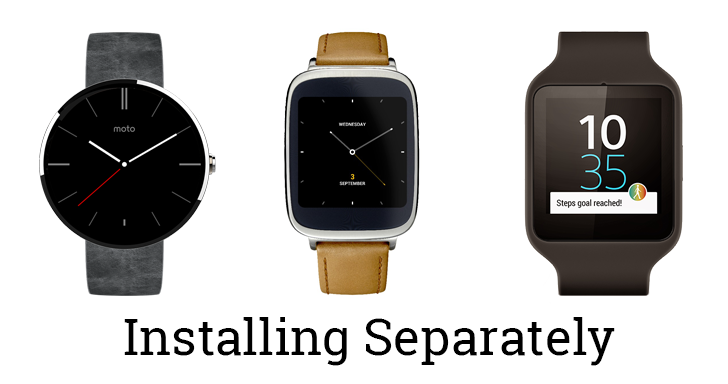Android Wear has come a long way in the last three years, but it was the launch of Wear 2.0 that brought the most significant changes. With most of the Wear devices updated to 2.0, Google is adjusting the way it markets apps that target small(er) screens and implementing a new distribution model that removes some of the compromises associated with supporting older Wear devices.
A post to the Android Developers Blog details plans to change the "Enhanced for Android Wear" badge requirements. Apps that originally qualified for the badge by simply implementing enhanced notifications are no longer going to be included if they don't also have a Wear app to go with them. Additionally, apps that use the original distribution method of bundling microAPKs inside of a phone app are also losing their badge. The new policy will go into effect January 18, 2018, and is meant to promote development of standalone apps for Wear 2.0.
To ensure Wear 1.x devices can still be supported by app developers, Google is also adapting the Play Store's multi-APK system to take on the responsibility of distributing an app's microAPK. When a user downloads an app to a phone that is paired with a watch running Wear 1.x, the Play Store will also retrieve and install the microAPK on their watch.
The standard distribution model for Wear 1.x was embedding a watch app inside a phone app. Android Wear now allows you to distribute your Wear app the same way for both Wear 1.0 and 2.0. When a user installs your phone app, if you have a compatible Wear app in the Play Store, it will automatically be installed on Wear 1.0 watches. This feature allows you to stop embedding Wear apps within your phone app's APK. You can provide standalone versions of your watch APK in the Play Store for both Wear 1.0 and Wear 2.0 watches.
(source)
Developers are encouraged to follow a fairly simple process to unbundle their Wear 1.x apps from the phone apps that contain them and upload both to the Play Store. Once the APKs are properly decoupled, the process of uploading them to the Play Store will be exactly the same as publishing standalone apps for Wear 2.0.
Clarification: Many of the reports circulating on this topic have erroneously claimed that this change will allow apps developed for Wear 2.0 to work on devices running Wear 1.x. To be clear, apps built for Wear 2.0 will not run on Wear 1.x devices. This change only relates to using a newer distribution model. Google is encouraging developers to stop using the old method associated with Wear 1.x, which involved bundling an APK for the watch inside of an APK intended for phones, and instead use the Play Store's multi-APK system that was introduced with Wear 2.0.
Almost all Android users will see at least a small benefit as some of our installed apps will get a bit smaller, including some from Google. The new install process for those with Wear 1.x devices should remain mostly seamless, so those users may not even notice the difference.
Source: Android Developers Blog

